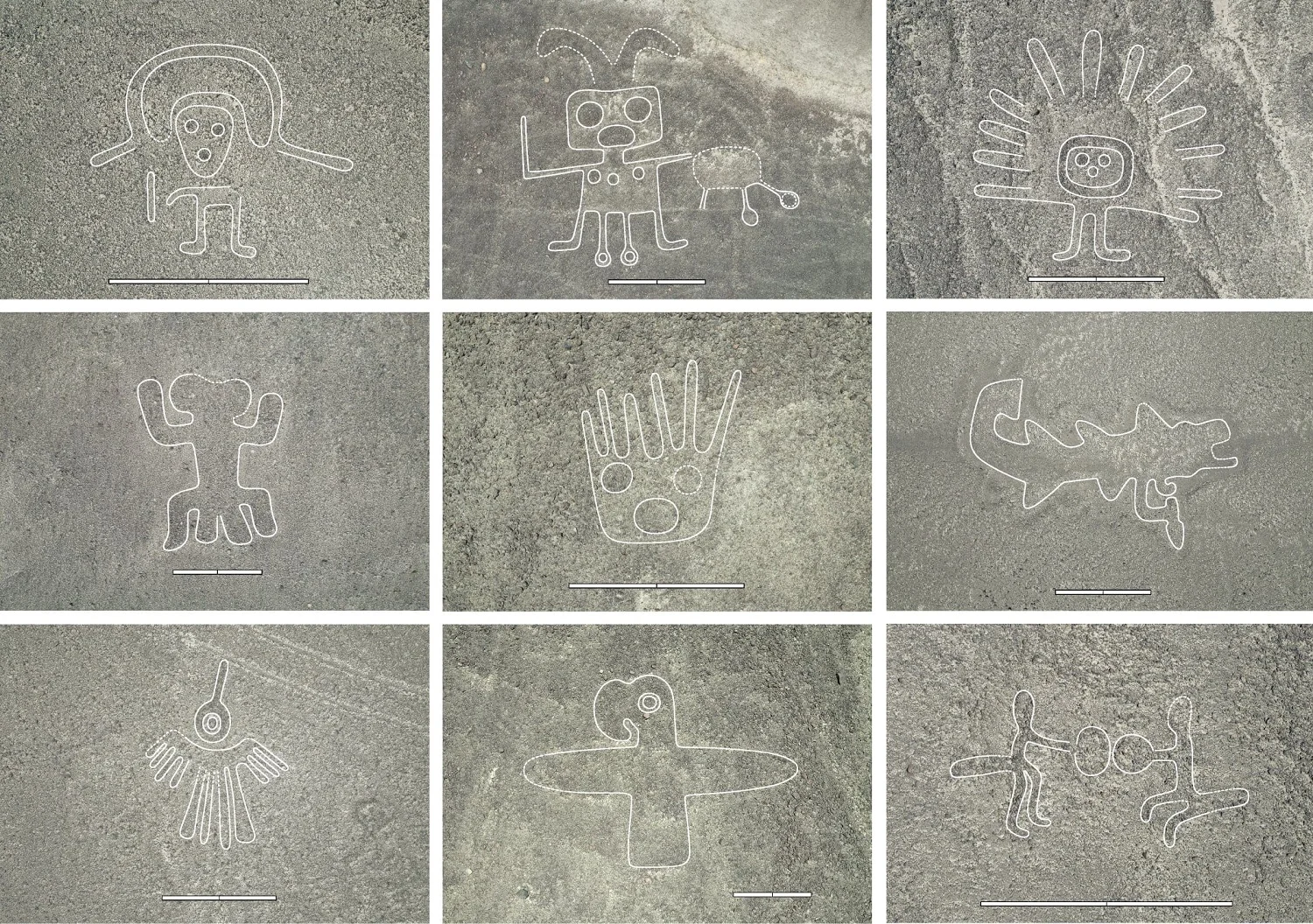Archaeologists from Yamagata University of Japan, working in collaboration with the Peruvian Ministry of Culture, have discovered 303 new geoglyphs in the Nazca Pampa region of Peru.
The geoglyphs are motifs created on the ground by manipulating surface stones, a tradition that first appeared around the 1st century BC during the Initial Nasca period (100 BC to AD 50) and continued until the 15th century during the Ica period.
The combined application of drones and advanced Artificial Intelligence (AI) technology, developed in partnership between the Nazca Institute of Yamagata University and IBM Research, has enabled a significant advancement in the study of the Nazca Pampa and more than doubled the number of known geoglyphs.
According to a paper published in the Proceedings of the National Academy of Sciences (PNAS): “Even with limited training examples, the developed AI approach is demonstrated to be effective in detecting the smaller relief-type geoglyphs, which unlike the giant line-type geoglyphs are very difficult to discern. The improved account of figurative geoglyphs enables us to analyze their motifs and distribution across the Nazca Pampa.”
The new geoglyphs consist of both human (anthropomorphic) and animal representations, as well as geometric shapes and lines. Unlike the renowned Nazca Lines, these smaller geoglyphs are often found along ancient pathways and are believed to be much older.
Archaeologists from Yamagata University explained that these new geoglyphs are thought to be linked to everyday activities, serving as markers for travel routes, representations of social groups, or used in small-scale rituals. Other theories suggest that they were created to be seen by deities from above or served as a calendar with astronomical alignments.
Header Image Credit : gob.pe
Sources : The Peruvian State





